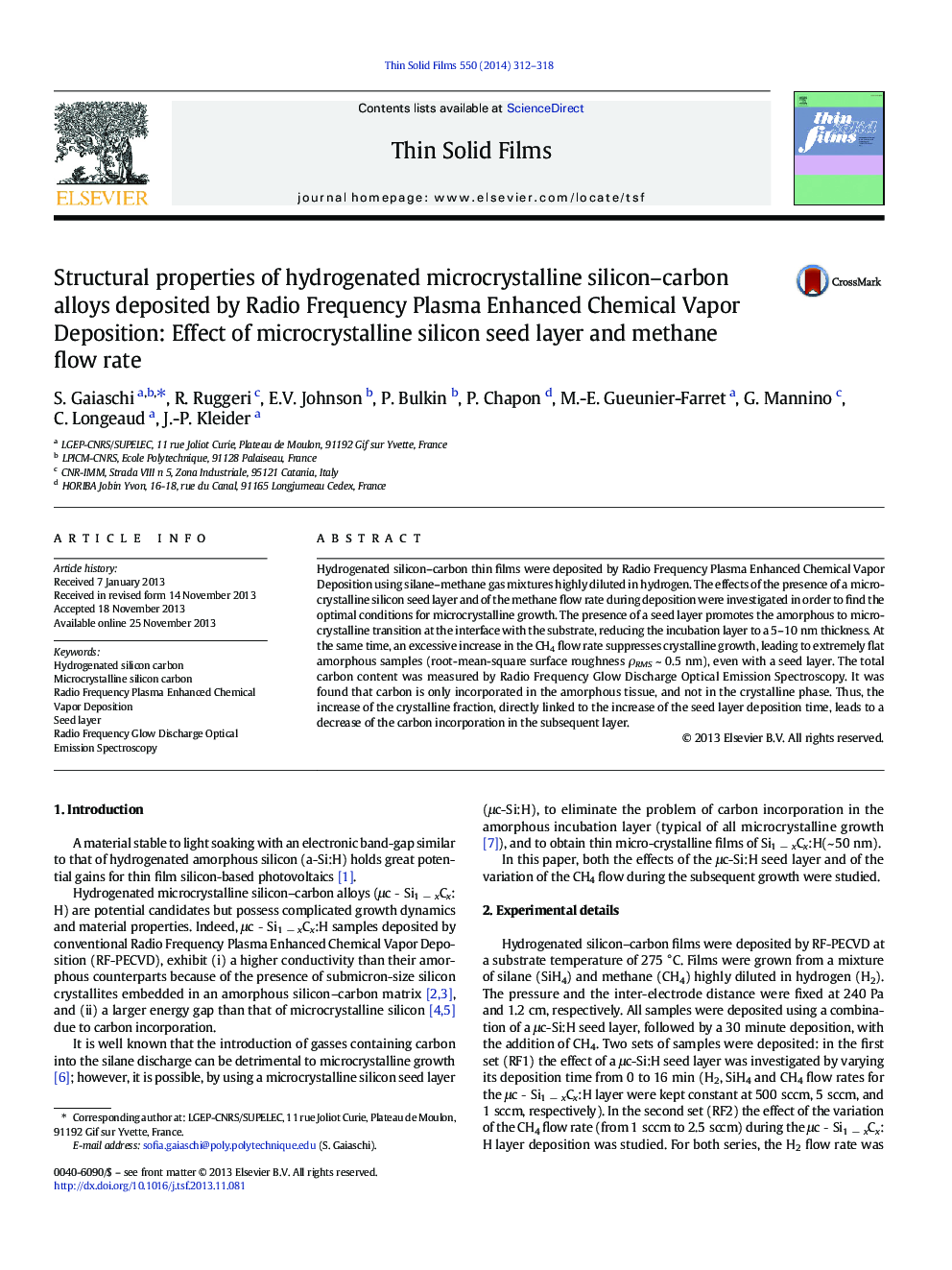| Article ID | Journal | Published Year | Pages | File Type |
|---|---|---|---|---|
| 8035525 | Thin Solid Films | 2014 | 7 Pages |
Abstract
Hydrogenated silicon-carbon thin films were deposited by Radio Frequency Plasma Enhanced Chemical Vapor Deposition using silane-methane gas mixtures highly diluted in hydrogen. The effects of the presence of a microcrystalline silicon seed layer and of the methane flow rate during deposition were investigated in order to find the optimal conditions for microcrystalline growth. The presence of a seed layer promotes the amorphous to microcrystalline transition at the interface with the substrate, reducing the incubation layer to a 5-10Â nm thickness. At the same time, an excessive increase in the CH4 flow rate suppresses crystalline growth, leading to extremely flat amorphous samples (root-mean-square surface roughness ÏRMSÂ ~Â 0.5Â nm), even with a seed layer. The total carbon content was measured by Radio Frequency Glow Discharge Optical Emission Spectroscopy. It was found that carbon is only incorporated in the amorphous tissue, and not in the crystalline phase. Thus, the increase of the crystalline fraction, directly linked to the increase of the seed layer deposition time, leads to a decrease of the carbon incorporation in the subsequent layer.
Related Topics
Physical Sciences and Engineering
Materials Science
Nanotechnology
Authors
S. Gaiaschi, R. Ruggeri, E.V. Johnson, P. Bulkin, P. Chapon, M.-E. Gueunier-Farret, G. Mannino, C. Longeaud, J.-P. Kleider,
